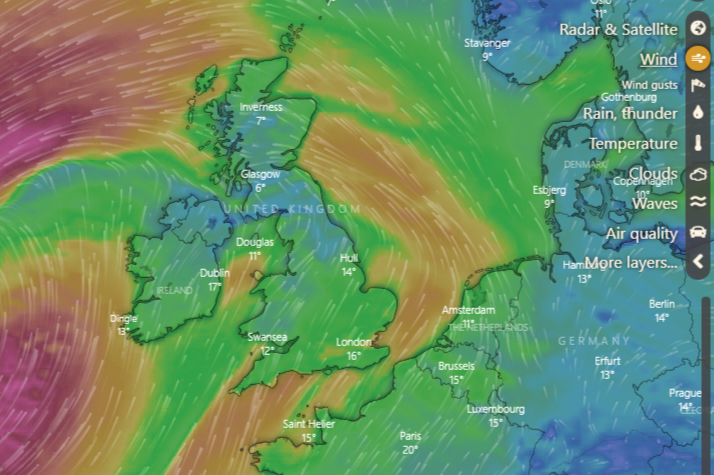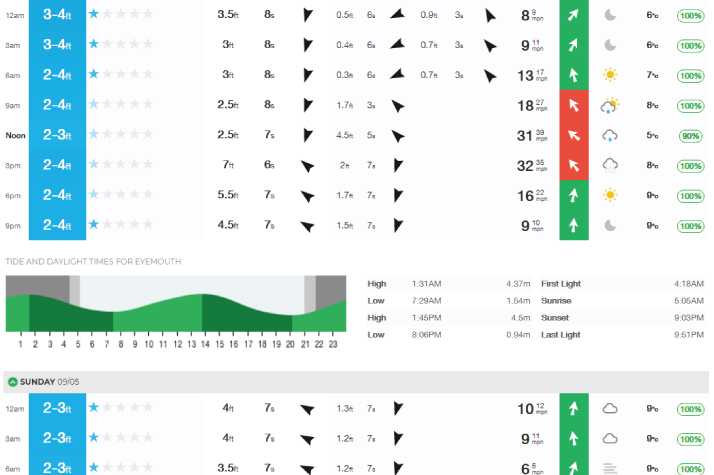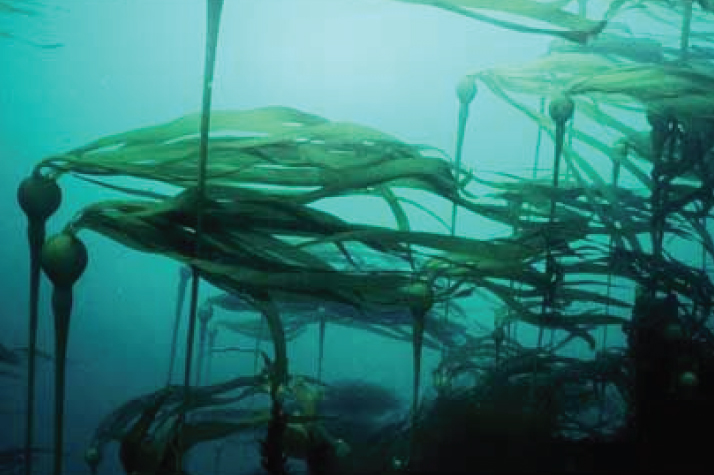
IS IT SAFE TO DIVE?
HOW TO ASSESS DIVE CONDITIONS
When dive planning, it's really important to know how to assess dive conditions. It's the only way to guarantee the best possible experience underwater and make sure that you and your buddy are going to be safe. On the days running up to your dive, you'll need to check the forecasts. Once you arrive at the site, you'll need to look at the water. During the whole process you'll be working out whether it's worth jumping in for the dive or leaving it for another day.
Knowing what's diveable and what's not depends massively on the location as it varies from site to site. It takes a long time to build up the knowledge to properly assess dive conditions and the only way you'll learn is by asking the locals! Divers who visit sites regularly are the best people to consult. They have an abundance of experience so milk them for their knowledge!
In this blog post I'm going to give you some of the basics you'll need to know to assess dive conditions. You can use the information here to start building up your own judgement and it'll help you ask the locals the right questions too.
1. READ THE WAVES
When you assess dive conditions and check for waves, you actually need to be thinking about the wind. There may be a favourable wind direction at your dive site which makes the waves small. Of course, there might be zero wind on the day, but if there's been a big storm out at sea, this can sometimes cause swell that will eventually reach the land.
To check out the winds, we use an app called Windy. We usually have a look on here about 2 weeks in advance to give us a general idea of what's coming, but it's not the most accurate when looking that far ahead. More reliable data comes in approximately 3 days in advance. One of the problems dealing with mother nature is that she can be quite unpredictable. We check Windy constantly on the days leading up to the dive to make sure that nothing has changed too much!
For us in the North East, a westerly wind usually means amazing dive conditions. Because the wind is coming off the land, it flattens the sea. If we're really lucky and we get a few weeks of westerlies diving in Northumberland is out of this world. The viz is good and the sites are stunning. However, winds from the East generally blow the sea out and it's time to find shelter in the quarries or the west coast!

2. CHECK THE TIDES
Anything that moves the water will affect the visibility. Waves are an obvious one, but the movement of the tides are also an important thing to consider to assess dive conditions. Slack tides are when the water stops moving at the peak of the high tide or trough of the low tide - basically before the water changes direction. During slack tide you tend to get the best visibility because sediments on the seabed settle due to the lack of water movement. High slack tides are usually the best but it really depends on the site.
If you're diving from shore, the tides are also an important thing to think about when it comes to planning your entry and exit. We've got a few sites in Northumberland where a low tide means a VERY long walk!
At certain dive sites, tides can also cause currents that can catch you out - particularly if there's narrow channels between islands or an area that's prone to longshore drift. These types of currents can be even stronger during spring and neap tides. Spring tides are the highest and neap tides the lowest. They occur due to the gravitational forces of the sun and moon forcing the oceans to ‘bulge’ a little more than usual. During these special tides, there is more water moving in a shorter space of time - and it's moving faster than normal! If you're diving from a boat this makes for an exciting ride and drift dive, but if you're trying to dive from shore you might find yourself in a sticky situation if you can't get back to your exit point.
To check out the tides an awesome app to use is Magic Seaweed. Just bear in mind that this is a surfing app therefore when 5 stars show, this does not mean get your kit together and go diving - it's more of a stay away sign! The free version of Magic Seaweed allows you to check the tides a few days in advance which is perfect as this correlates well with re-checking the wind.
If you want to know the tides further in advance, it's best to get a tide booklet from your local harbour. They're published every year.

3. PREDICT THE CURRENT
We are not going to lie… currents are difficult to predict! We can have a cheeky look at the tides and make an educated guess once we know a dive site pretty well, but even we still get caught out occasionally. They're hugely dependent on the topography of the landscape and are massively dynamic.
The best way to assess dive conditions and current is to have a look around when you arrive at the site - both on the surface and underwater. You can sometimes see the movement of the water - especially if there's boats moored up. They will sit with the bow pointing into the current. If you can, stick your head under the water and take a look - fish often swim into the current and if the seaweed or soft coral is bending over, it's like trees in the wind and will show your the direction. Plus, the more the seaweed is flexing... the faster the current is moving!!

The easiest way to dive in a current is from a boat. This way, you can let the skipper know to keep an eye out for your SMB and you will be grand. Also, you get to do a cheeky drift dive for all those thrill-seekers out there! If drift diving isn't possible, you should always start by swimming into the current so that you don't wear yourself out and use up all of your energy before you even turn the dive. Also, a little tip for if you do have to swim against a current underwater - stick close to the bottom or near a wall. The current will be weaker here.
4. CAST A SPELL FOR GOOD VIZ
Get your fairy dust out (biodegradable of course) and sprinkle it before a dive because good visibility is HARD to predict. Even when you've done your best to assess dive conditions on the run up to your dive, you might get there and there's no viz. It's happened to us loads of times!
Good visibility is very subjective to the topography of the site and massively depends on the sediment. If you're diving on a very sandy or silty site, even the smallest waves, current or wind blowing in the wrong direction can mess up the viz. If the bottom is rocky then it might not matter as much. We've also been caught out when it's raining. Although rain doesn't usually affect the viz directly, if you're diving near a river estuary and it's been raining heavily, there might be a lot of silty water running out the river.
5. HAVING A PLAN B
For us as divers, having a Plan B is a good idea. We simply should not be putting ourselves in danger for the sake of a dive… the ocean will always be there, so come back another day. Our plan b's include changing the site - maybe we can find somewhere more sheltered or visit an inland dive site instead. Sometimes we just knock the dive on the head altogether and go to the cafe for tea and cake instead!
If you've found this information useful, you might also be interested in our diver subscription Submerge. Along with LOTS of diving, we also hold weekly online training that covers things like dive planning and how to assess dive conditions in more detail. You can find out more here.